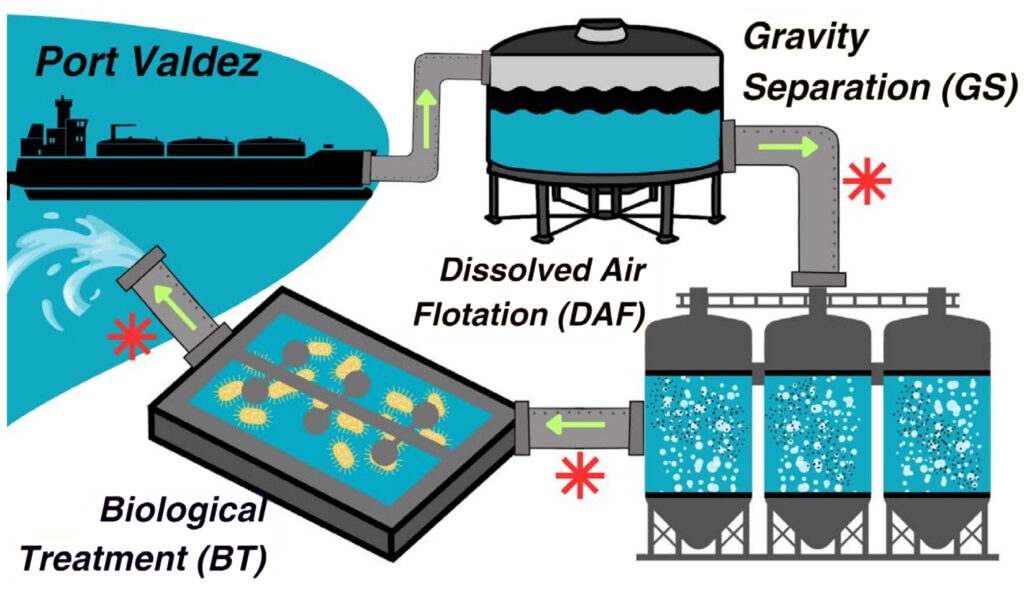A new report examined hydrocarbons that enter Prince William Sound from the Valdez Marine Terminal that until recently have received little attention.
Researchers Maxwell Harsha and David Podgorski from the University of New Orleans investigated the current process of removing crude oil residue from tanker ballast water. They were specifically looking for a type of compound called oxygenated hydrocarbons, as well as heavy metals.
What are oxygenated hydrocarbons?
Hydrocarbons are made of hydrogen and carbon molecules. There are a variety of types, depending on how these molecules are arranged. Crude oil is a mixture of types of hydrocarbons.
Hydrocarbons can become “oxygenated” when atoms of oxygen become attached to hydrocarbon molecules. This family of compounds is currently not monitored or regulated because they cannot be detected with the same process as other components of crude oil. Concerns about these compounds are emerging due to potential risks to human health and the environment.
Residue left in ballast water
Three treatment processes are employed to remove hydrocarbons from oily ballast water: gravity separation, pressurized air treatment called dissolved air flotation, and biological treatment.
Harsha and Podgorski compared samples of water taken at different points during the process of cleaning ballast water at the terminal.
The study’s results demonstrate that the treatment process effectively removes most hydrocarbon compounds, such as benzene, toluene, ethylbenzene, and xylene (BTEX). These are considered the most harmful to humans and other organisms, known to cause cancer and neurological impacts. The concentration of hydrocarbons in the water after treatment is at historically low levels. The researchers also found that one of the steps in the treatment, which uses dissolved air to remove small particles of hydrocarbons from the water, may lead to the formation of oxygenated hydrocarbons that are then released into Port Valdez.
Traditional monitoring techniques used at the Valdez Marine Terminal identify other hydrocarbons, but don’t catch oxygenated hydrocarbons.

What is ballast water?
Tankers sometimes pump seawater into empty crude oil storage tanks to help balance the vessel during rough seas. When a vessel carrying oily ballast water arrives at the Valdez Marine Terminal, the water is treated to remove hydrocarbons before discharged into the sea at Port Valdez.
Read the report: Examining the Effectiveness of Ballast Water Treatment Processes: Insights into Hydrocarbon Oxidation Product Formation and Environmental Implications